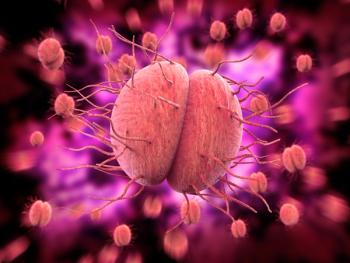
Differing recommendations on intranasal flu vaccine
While the ACIP continues to recommend the intranasal flu vaccine for the coming year, AAP is being more cautious in its recommendation due to limited data on last year’s performance.
With summer still in full swing, it’s difficult to think ahead to the upcoming flu season, but public health officials have already reviewed and updated some influenza vaccine recommendations, including suggesting limitations on the use of the intranasal version of the vaccine.
The
“Both the AAP and the CDC reviewed and considered all the influenza vaccine efficacy data and also new information that was provided by the manufacturer, and both groups voted to have [live attenuated influenza vaccine (LAIV)] as an option,” says Henry H. Bernstein, DO, MHCM, FAAP, a member of the ACIP who helped craft the recommendations. “However, the CDC wants it voted to have it as an option for anyone in whom it is otherwise appropriate whereas the AAP suggested it be offered to children who otherwise couldn’t receive an influenza vaccine.”
The ACIP voted to recommend LAIV4, the intranasal flu vaccine, as an option for anyone for whom there are no contraindications, adding that there are no vaccine effectiveness estimates available for the new formulation of LAIV4. Meanwhile, the AAP recommends that the standard influenza vaccine (IIV3/4) be used as the primary choice for all children for the 2018-2019 season because of the intranasal vaccine’s poor performance in past years. According to the report, LAIV4 “was inferior against A/H1N1 during past seasons and is unknown against A/H1N1 for this upcoming season.” The AAP recommends that LAIV4, the intranasal vaccine, only be offered to children who would not otherwise receive a flu shot.
“The AAP is happy to offer LAIV4 as an option in children who would otherwise be unvaccinated against flu, but the AAP feels it would be better to receive the flu shot as the primary choice,” Bernstein says. “Both groups optimally want to increase coverage rates for flu vaccine for as many children as possible.”
According to the report, there are still questions over how well the LAIV4 vaccine works, having been reintroduced just last year following a recommendation against using the vaccine for some time over concerns about its efficacy against certain flu strains.
“The data suggested that the effectiveness of LAIV3 or LAIV4 for influenza strain A/H1N1 was lower than IIV in children 2 to 17 years old,” the report notes. “However, LAIV was more effective against influenza B strains and similarly effective against A/H3N2 when compared with IIV.”
For last year, data show that A/H3N2 was the predominant flu strain and that the IIV vaccine provided adequate protection against A/H1N1 and B influenza viruses but lower protection against A/H3N2 viruses. The LAIV4 vaccine was reintroduced for the 2017-2018 season after a hiatus, with the manufacturer providing data about new formulations used to improve efficacy. However, the AAP notes that because it was the first year of reintroduction for this formulation there is limited data about its efficacy. In addition, the flu strains for which the LAIV4 vaccine had limited efficacy were not predominant last season, says the AAP.
Additional recommendations will be released in the AAP’s official flu policy statement in early September, but Bernstein says few other major changes from last year are anticipated. He says stakeholders will continue to recommend that all pregnant women receive the flu vaccine at any time during pregnancy, and that any children with egg allergies be permitted to receive the vaccine with some precautions taken.
References:
1. Munoz-Rivas FM, Bernstein HH. AAP influenza immunization recommendations revised for 2018-19 season. AAP News. Available at:
Newsletter
Access practical, evidence-based guidance to support better care for our youngest patients. Join our email list for the latest clinical updates.








